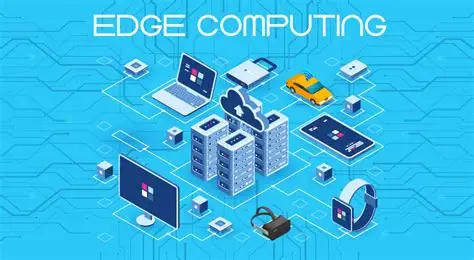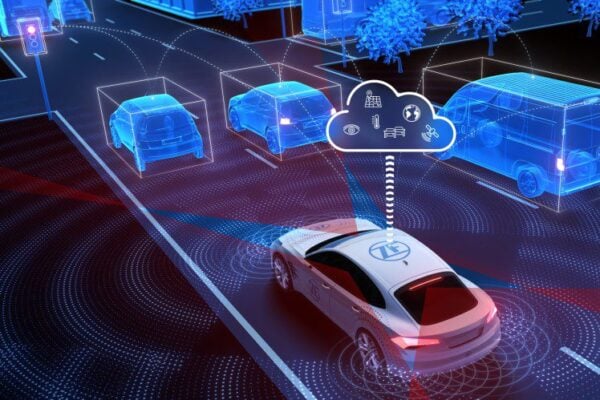Vehicle-to-Cloud Connectivity: Architecture, Benefits & Risks
Aug 16, 2025 Resolute Dynamics
Vehicle-to-cloud connectivity (V2C) is changing how vehicles communicate, think, and respond. It lets a vehicle talk to the cloud in real time, sharing data that helps improve safety, maintenance, traffic flow, and the driving experience. In this article, you’ll learn how V2C systems are built, the major benefits they bring to modern fleets, and the real risks that come with them.
What Is Vehicle-to-Cloud (V2C) Connectivity?

Vehicle-to-cloud connectivity, or V2C, is the digital bridge between a vehicle and the cloud. It’s the system that allows cars, trucks, and other vehicles to send and receive real-time data using internet-based cloud platforms.
At its core, V2C is like giving every vehicle a voice—and the cloud is the listener, analyst, and responder.
What Kind of Data Is Shared?
Modern connected vehicles are loaded with electronic components and smart sensors. These include:
-
GPS modules that track location and route
-
Onboard diagnostics (OBD-II) that monitor engine health and fuel usage
-
Accelerometers and gyroscopes that detect movement, braking, or skidding
-
ADAS sensors (cameras, LiDAR, radar) that spot lane changes, obstacles, or pedestrians
-
Driver behavior logs, like speeding, harsh braking, or distraction alerts
This data is packaged and sent—often via cellular networks (4G LTE, 5G) or satellite links—to cloud servers where it’s analyzed, stored, and acted upon.
What Does the Cloud Do with This Data?
The cloud acts like the vehicle’s second brain, only smarter and more powerful. Once it receives data from the vehicle, it can:
-
Run machine learning models to detect patterns or anomalies
-
Generate real-time insights (e.g., “engine overheating risk”)
-
Send back commands, alerts, or over-the-air (OTA) updates
-
Aggregate information from multiple vehicles to create fleet-wide intelligence
For example, if several trucks in a region report icy roads, the cloud system can alert all nearby vehicles to reduce speed or reroute. This kind of predictive communication helps prevent accidents and optimize routes.
How V2C Fits into the V2X Ecosystem
V2C is one branch of a broader family called V2X, or Vehicle-to-Everything communication. Here’s how they connect:
| V2X Component | Communicates With | Use Case Example |
|---|---|---|
| V2V (Vehicle-to-Vehicle) | Other nearby vehicles | Collision avoidance |
| V2I (Vehicle-to-Infrastructure) | Traffic lights, road signs | Signal timing |
| V2P (Vehicle-to-Pedestrian) | Smartphones, wearables | Pedestrian alerts |
| V2C (Vehicle-to-Cloud) | Cloud-based servers | Fleet analytics, remote updates |
What makes V2C special is that it connects the vehicle to remote intelligence—not just other nearby elements, but a powerful cloud-based backend that can see a bigger picture across cities, roads, and even continents.
Why It Matters
Before V2C, vehicles were mostly isolated machines. They relied only on their internal sensors and the driver’s judgment. But with V2C, a vehicle becomes part of a larger connected ecosystem. It doesn’t just react—it learns, predicts, and adapts.
This leads to:
-
Smarter fleets
-
Safer driving
-
Faster decision-making
-
Proactive maintenance
-
Better fuel and route efficiency
In essence, V2C turns a vehicle into a rolling data center—always learning, always evolving, and always connected to the cloud.
The Architecture of V2C Systems
At the heart of every vehicle-to-cloud system is a multi-layered digital architecture. Think of it as a pipeline that moves information between a smart vehicle and a powerful cloud engine—fast, securely, and continuously.
Let’s break down each part of this architecture and see how they work together.
1. Onboard Systems: The Vehicle’s Digital Nervous System
Every connected vehicle today is more than just metal and wheels—it’s a rolling computer. Its brain is made up of a mix of sensors, modules, and microcontrollers that constantly monitor and collect data.
Key Components:
-
ECUs (Electronic Control Units):
These are small computers inside the vehicle that control specific functions—like the engine, brakes, transmission, airbags, or infotainment. Some vehicles have 70+ ECUs, all working together. -
Telematics Control Unit (TCU):
This is the central communication hub. It collects data from sensors and ECUs and sends it to the cloud using a cellular modem or satellite link. It also receives updates or commands from the cloud. -
Sensors and Cameras:
These include:-
Lidar and radar for object detection
-
Cameras for lane keeping, traffic sign recognition
-
Accelerometers and gyroscopes for motion tracking
-
Temperature and pressure sensors for monitoring engine and tire health
-
Purpose:
This onboard network ensures the vehicle continuously tracks:
-
Speed and location
-
Vehicle health and diagnostics
-
Driver behavior
-
Surrounding road and traffic conditions
2. Communication Layer: The Digital Bridge
Once the data is ready, it needs a way to reach the cloud. That’s where the communication layer steps in. It acts as the digital highway between the vehicle and the cloud infrastructure.
Primary Technologies:
-
4G LTE and 5G Cellular Networks:
These are the most common and reliable ways to transmit data.-
4G LTE supports low-bandwidth telemetry and diagnostics
-
5G enables real-time, low-latency communication for tasks like collision avoidance or live video streaming
-
-
Satellite Communication (SATCOM):
In remote areas with no cellular coverage—like rural highways or mountain roads—satellite networks ensure uninterrupted connectivity. -
DSRC (Dedicated Short-Range Communications):
Used for V2V and V2I applications where milliseconds count. However, being phased out in some regions in favor of C-V2X (Cellular Vehicle-to-Everything). -
Wi-Fi (802.11p):
Sometimes used in smart parking systems or low-speed communication in confined environments (like warehouses or industrial yards).
Supporting Protocols:
-
MQTT (Message Queuing Telemetry Transport): Lightweight messaging protocol ideal for sending telemetry data
-
HTTPS and REST APIs: For secure cloud interactions
-
TCP/IP stack for network transport
3. Cloud Backend: The Intelligence Engine
Once vehicle data arrives in the cloud, it’s processed by a backend infrastructure built for speed, scalability, and intelligence.
Key Layers:
-
Data Ingestion Layer:
-
Handles massive streams of incoming data
-
Tools like Apache Kafka or AWS Kinesis are commonly used
-
-
Data Lakes & Warehouses:
-
Raw data is stored in data lakes (like Amazon S3, Azure Data Lake)
-
Structured and queryable data goes to warehouses (Snowflake, BigQuery)
-
-
Analytics & Machine Learning Layer:
-
Uses AI/ML models to:
-
Detect patterns (e.g., frequent brake wear)
-
Predict failures (e.g., engine overheating)
-
Score driver behavior and safety
-
-
Popular tools: TensorFlow, SageMaker, Databricks
-
-
Microservices & APIs:
-
These allow different systems—like fleet dashboards, insurance systems, or smart city infrastructure—to access or act on vehicle data in real-time.
-
-
Cybersecurity & Access Control:
-
Data is encrypted in transit and at rest
-
Role-based access controls (RBAC)
-
Intrusion detection systems (IDS)
-
Cloud Security Posture Management (CSPM) tools ensure compliance (GDPR, ISO/SAE 21434)
-
4. Edge Computing: Fast, Local Decision-Making

Not all data needs to travel to the cloud. In many cases—like automatic braking, lane assist, or airbag deployment—decisions must be made instantly, without waiting for cloud response.
That’s where edge computing comes in.
What It Does:
-
Processes critical data locally using onboard processors (often inside the ECU or TCU)
-
Reduces latency, making response time faster
-
Minimizes bandwidth usage by filtering out unnecessary data before sending to the cloud
-
Supports failover if cellular or satellite connectivity is lost
Common Use Cases:
-
Autonomous driving decisions
-
Real-time obstacle avoidance
-
Video processing for computer vision
-
In-vehicle alerts and adaptive systems
How All These Layers Work Together
Let’s imagine a real-world example:
A delivery truck hits a patch of black ice.
-
The onboard system detects a skid via sensors.
-
The TCU sends this event to the cloud via 5G.
-
The cloud logs the incident, analyzes location data, and identifies similar reports from nearby vehicles.
-
The system sends alerts to:
-
Other vehicles heading toward that road
-
The fleet manager dashboard
-
The driver (advisory warning)
-
-
A city infrastructure system could activate a digital sign or salt spreader.
This seamless interaction between vehicle, network, and cloud is what makes V2C so powerful.
Bonus Tip: Why a Strong Architecture Matters
A fragile or outdated architecture can cause:
-
Data loss
-
Latency in safety alerts
-
Poor predictive maintenance
-
Compliance risks with data privacy laws
That’s why a well-designed, secure, and scalable V2C architecture is critical—not just for convenience, but for life-saving, real-time decisions.
Key Benefits of Vehicle-to-Cloud Integration
V2C isn’t just cool tech. It solves real problems in safety, maintenance, and logistics.
1. Real-Time Data Exchange
Fleets can monitor:
-
Sudden braking
-
Route changes
-
Engine warnings
… all in real time. This keeps fleet managers one step ahead.
2. Fleet-Wide Intelligence
When thousands of vehicles send data to the cloud, companies can:
-
Track fuel efficiency
-
Detect risky drivers
-
Spot common failures across vehicle models
This turns raw data into actionable intelligence.
3. Predictive Maintenance
Instead of waiting for a breakdown, V2C helps:
-
Forecast part failure
-
Plan service schedules
-
Avoid downtime
It’s like your vehicle telling you, “Fix me next week before I break.”
4. Enhanced Road Safety
Cloud systems analyze traffic, weather, and hazard data to:
-
Warn drivers about road issues
-
Suggest speed adjustments
-
Trigger auto-braking or rerouting
This helps prevent crashes before they happen.
5. Scalable Software Updates
With over-the-air (OTA) updates, automakers can:
-
Patch software bugs
-
Add new features
-
Upgrade vehicle systems remotely
Pitfalls and Challenges in V2C Systems
Like any connected system, V2C has its share of downsides.
1. Cybersecurity Threats
A connected car is also a target. Hackers could:
-
Steal personal data
-
Hijack vehicle functions
-
Interrupt communication streams
End-to-end encryption and firewalls are a must.
2. Latency & Dead Zones
V2C needs stable internet. In rural or underground areas:
-
Signals can drop
-
Data delays can cause slow reactions
-
Edge computing can’t cover everything
3. Data Overload
Vehicles produce terabytes of data daily. Without proper filters:
-
Cloud systems can choke
-
Important alerts get buried
-
Storage costs skyrocket
Smart filtering and compression help here.
4. Regulatory Compliance
Every country has its own rules:
-
GDPR for data privacy
-
ISO 26262 for vehicle safety
-
National rules on where data is stored
Automakers must stay up to date or face heavy penalties.
Real-World Use Cases of V2C
V2C is already making an impact in the real world.
-
Urban Safety: Buses in smart cities use V2C to adjust speed based on pedestrian density.
-
Driver Monitoring: Trucks in long-haul fleets track drowsiness and send alerts to managers.
-
Accident Reduction: Cars reroute away from real-time accident zones using crowd-sourced cloud data.
These applications save time, lives, and money.
Best Practices for V2C Deployment
Companies looking to add V2C should follow some ground rules.
-
Use TLS encryption and VPNs for secure data channels
-
Add redundancy systems to handle network drops
-
Partner with trusted cloud providers like AWS or Azure
-
Balance cloud and edge processing for performance
The Future of Vehicle-to-Cloud Connectivity

As we head toward autonomous driving and smart cities, V2C will play a key role.
-
Self-driving cars will rely on cloud brains for coordination
-
Smart roads will talk back to vehicles
-
AI copilots will learn from cloud models, adapting to driver habits
V2C is a foundation for the next era of mobility.
Conclusion
Vehicle-to-cloud connectivity is more than just a tech buzzword. It’s the backbone of the connected car future—boosting safety, improving efficiency, and turning data into smart decisions. While there are risks, the benefits far outweigh them if done right. For companies building safer, smarter fleets, now’s the time to plug into the cloud.